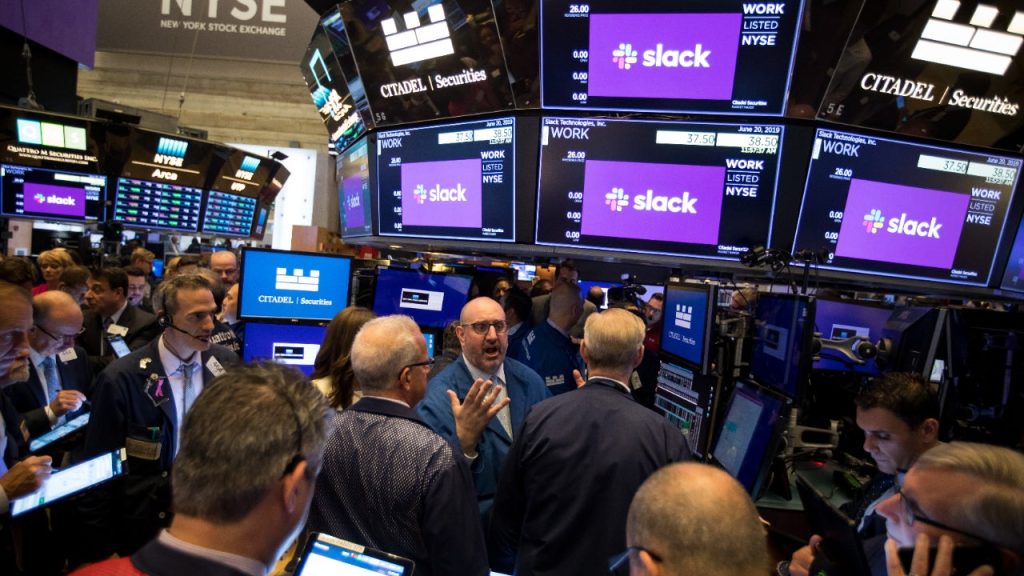Our writers and editors used an in-house natural language generation platform to assist with portions of this article, allowing them to focus on adding information that is uniquely helpful. The article was reviewed, fact-checked and edited by our editorial staff prior to publication.
If a company is looking to go public, it has two major ways to do so: the traditional route called an initial public offering (IPO), where the company sells stock to the public, or a direct listing, in which the company lists its shares on a stock exchange without any financial intermediary.
Each method offers advantages to the companies going public, but their relative benefits to investors are less clear. Here’s what you need to know to understand the differences between IPOs and direct listings.
What is an IPO?
An IPO is the traditional way for a company to raise equity capital for its operations from the broader investing public. In an IPO, a private company makes shares available to investors to purchase. An IPO is underwritten by a lead investment bank, which then hires other investment banks and broker-dealers to help sell and distribute stock in the newly public company.
“The underwriter performs a valuation analysis of the company to determine an appropriate share price and buys newly created shares from the company before selling them to outside investors,” says Tyler Gilley, CFP, associate wealth advisor at Halbert Hargrove, an investment manager in the Los Angeles area.
In this process, the private company becomes a publicly traded company. After the company conducts its IPO, anyone can purchase shares on the exchange where they’re traded.
Key features of an IPO include:
- An IPO sells stock in the company, typically with the intent to raise money for the company.
- An IPO is underwritten by savvy banks or brokers rather than being listed by the company.
- Underwriters can earn hefty fees for leading an IPO and selling shares in it.
- The initial IPO price is set by underwriters, and the underwriters typically have methods (such as a greenshoe) to help prop up the stock price in the days after the IPO.
- Well-connected investors – including the underwriter’s best clients and large institutional investors – usually get preferential access to buying stock as part of the IPO.
- IPOs that are oversubscribed often experience a “first-day pop,” rising significantly on the company’s potential to become a top performing stock – a benefit for investors who can buy shares pre-IPO.
- The underwriter researches the company before selling shares to the public, helping to verify the company’s financial data and providing some assurance to investors.
- Financial and legal info is available to all investors in the company’s prospectus on Form S-1, before and after the actual stock offering.
- Since new shares are sold to the public, an IPO often dilutes the ownership share of existing investors in the company.
Those are some of the most pertinent features that distinguish the IPO.
What is a direct listing?
In a direct listing, also known as a direct placement, a company lists its shares on an exchange without the use of an investment bank or other intermediary. In a direct listing, insiders sell their shares straight to the public, and the company may decide to raise capital by selling stock, too. But only in 2020 did the Securities & Exchange Commission (SEC) begin allowing companies to raise capital using a direct listing.
While they’ve existed for some time, only recently have direct listings become more popular for high-profile companies. For example, the first direct listing on the New York Exchange was Spotify, and occurred only in 2018. As in the IPO process, a company that lists directly must file a prospectus that details financial and legal details of the company as well as any business risks and other pertinent information.
Key features of a direct listing include:
- A company’s stock is sold directly to the public on the exchange.
- A direct listing bypasses the traditional gatekeepers of the financial markets such as investment banks.
- There are no guarantees that there will be enough stock available to meet demand, meaning the stock may be volatile, especially right after its debut.
- Often companies raise no capital in a direct listing, and it’s insiders who are selling their shares to the public.
- Direct listing may be more popular for companies that do not need to raise capital through an IPO.
- It’s much cheaper to conduct a direct listing than to use the traditional IPO route.
Those are some of the key features of a direct listing.
The direct listing process
A company may opt for a direct listing over a traditional IPO for a variety of reasons, but some of the key reasons involve money. Direct listings are cheaper, and if a company does not need capital to fund its operations, then it has little need to sell shares to the public using the IPO process.
Direct listings are much more cost-effective than a traditional IPO. Because it avoids the underwriters and most other financial intermediaries, a direct listing can be done much cheaper. In the largest IPOs, it may cost hundreds of millions of dollars for the company to go public.
Direct listings may also allow companies to go public without diluting their private investors’ interest in the company, if the company itself does not raise capital in the listing.
“Direct listings have traditionally been made in the over-the-counter (OTC) market, in which securities are traded through a broker-dealer network rather than on a listed exchange such as the New York Stock Exchange,” says Gilley. This method allowed companies to set their own terms, including the stock’s initial price and any limits on shares that could be purchased.
“Companies now have the option to register their shares of stock and undergo a direct listing on an exchange to allow the entire public market to gain access and determine the market price per share based on supply and demand,” says Gilley.
A direct listing also allows insiders to sell their stock immediately on the exchange without the lock-up of shares that is normal in the IPO process. In many cases the only stock available in a direct listing comes from insiders (and not from a company selling shares), so preventing insider sales would stymie the success of the direct listing process.
A company may be interested in a direct listing if it has a feature that would be less attractive to investors in the traditional IPO route. For example, two stocks that conducted a direct listing in recent years – Slack and Coinbase – both had a dual-share-class structure.
This setup gives insiders a special class of stock, providing them many extra votes per share. In effect, this structure helps give insiders control of the company – a setup that many investors dislike.
Is a direct listing a better investment than an IPO?
From an investor’s perspective, the difference between an IPO and a direct listing may be minimal. The exact process is almost irrelevant to investors once the stock is trading publicly. With either method, investors can buy and sell the stock through their brokerage account, and that’s what investors really care about, not whether it came to market through one method or another.
But each structure has some features that investors should consider as they’re thinking about how the company went public and that may indicate why the management chose that method, giving investors insight into the alignment of company insiders with outsider investors.
For a traditional IPO, one perceived benefit from an investor’s perspective is “the enhanced due diligence conducted by the investment bank,” says Caleb Tucker, CFA, director of portfolio strategy at Merit Financial Advisors in the Atlanta area. “Since the bank has capital at risk in the IPO, it pursues a lengthy due diligence process on the company going public.”
The traditional IPO route also creates benefits for the company going public.
“The main advantage of an IPO is that it carries a lower degree of risk to the company because the underwriter first pays the company the agreed-upon price of some or all the newly created shares,” says Gilley. “Therefore, the underwriter assumes the risk of greater volatility of demand for the new shares while the current owners have a higher level of confidence in the amount of capital they will raise.”
With a traditional IPO, the team of underwriters also “hype” a stock to generate interest among the investing public and help it sell well. But working with an investment bank is certainly no guarantee of success, and the high-profile IPO of Facebook (now Meta Platforms) in 2012 saw the stock decline precipitously before going on to good returns in later years.
In a direct listing, a stock’s initial price movements may be volatile, because there is often no guaranteed number of shares that hit the market. Instead, available shares will come from the insiders who decide to sell into the market. If demand outstrips supply, the price could rise faster than is warranted, while if the supply of stock exceeds demand, the price could fall. Over time, these imbalances can work themselves out, but in the short term they could whipsaw a stock.
That said, a direct listing may allow the market to more accurately price a stock, because it’s based on true market factors rather than the artificial hype from a team of IPO underwriters.
If you’re looking at investing in newly public companies, another popular option is buying a special purpose acquisition company, or SPAC. Also known as “blank-check companies,” SPACs have cash and are looking to buy a stake in a business and take it public. Many have seen massive declines in recent years, however, and investors often view them with suspicion.
Bottom line
For investors buying stock after the company is public, there’s little difference whether the company went public via an IPO or direct listing. Instead, investors should pay careful attention to the prospectus and other documents filed with the SEC, and understand the risks presented by an investment in the company’s stock. These financial filings offer legal and financial information that is vital to making a good decision and they are “must reads.”
“Individual investors should take the time to understand the implications for various types of public offerings to avoid following a herd mentality or falling prey to certain risks and downsides associated with each option,” says Gilley.
Editorial Disclaimer: All investors are advised to conduct their own independent research into investment strategies before making an investment decision. In addition, investors are advised that past investment product performance is no guarantee of future price appreciation.
Read the full article here










